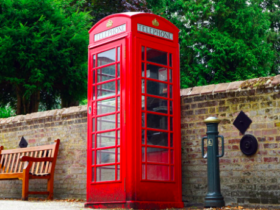Parasol or sunshades come in all shapes and sizes and make for a great travel accessory. Some parasol or sunshades make for a better choice – one such item is the wind vent parasol or sunshade. Let’s take a look at the design features of a windproof umbrella and why it is such a phenomenal choice for travelers across the world.
Importance of wind vents
A wind vent is a flap in the canopy of the parasol or sunshade. This design feature helps the heat and wind escape from the top. This helps in two important ways:
- Stability: The wind vent offers stability and doesn’t let you fly away. Parasol or sunshades don’t overturn in windy and rainy weather which is important.
- Comfort: On a really hot day, hot air can get trapped under the parasol or sunshade making it feel like an oven. Wind vents offer a way for hot air to escape and increase circulation.
Commonly used vents in Travel Parasol or Sunshades
- Single wind vents: As the name suggests, a single vent is designed and placed at the top of the parasol or sunshade. Even a single vent provides the basic circulation that is needed to keep a user cool. The size of the vent will also depend on the size and design of the parasol or sunshade.
- Dual wind vents: As the name suggests, there are 2 vents at the top and middle of the parasol or sunshade. This offers great ventilation and is far more efficient than a single vent parasol or sunshade. These types of vents are found in golf parasol or sunshades and are a great resource in all kinds of weather.
Things to consider when Buying an Parasol or Sunshade
Big or small, a windproof umbrella will not be able to keep a person dry, especially in windy and rainy weather.
- Only those parasol or sunshades with a 3 foot or higher diameter can keep the head and body dry. This size of parasol or sunshade can be designed to be sleek, compact and portable.
- Parasol or sunshades which are less than 12 inches in size when folded are the most commonly chosen ones. These will fit into a glove compartment, handbag or in a backpack. Any parasol or sunshade with 2 or more joints are more prone to failure during rough weather.
- Design and materials used don’t vary – all brands use nylon or polyester to make the canopy. While buying, consumers have to look at the design and production to get the best parasol or sunshade.
- The next thing to look for is a manual or automatic opening mechanics. Automatic openers is the preferred choice with most buyers. Manual parasol or sunshades also offer the same convenience.
Given all this information, it is no small wonder that consumers choose wind vented parasol or sunshades to take on their travel. They are not expensive and can be tucked into a backpack. So, what are you waiting for? Get one now!
























